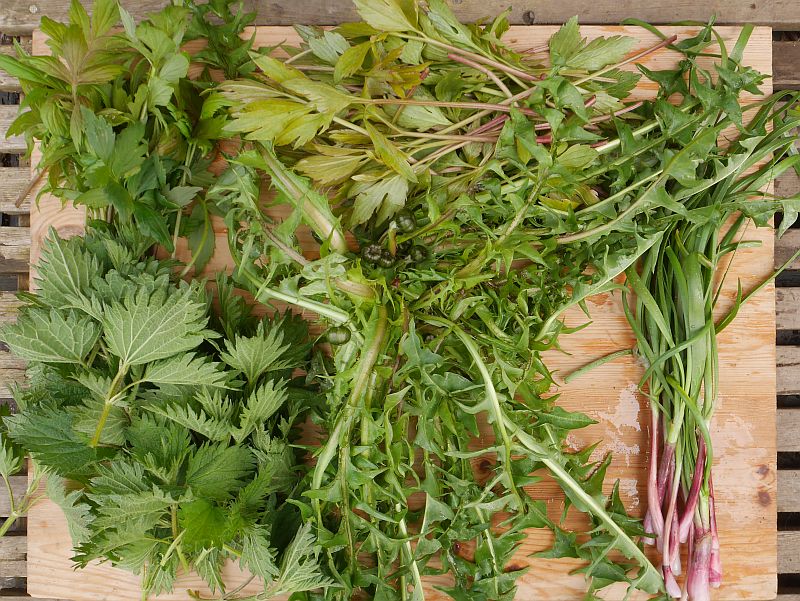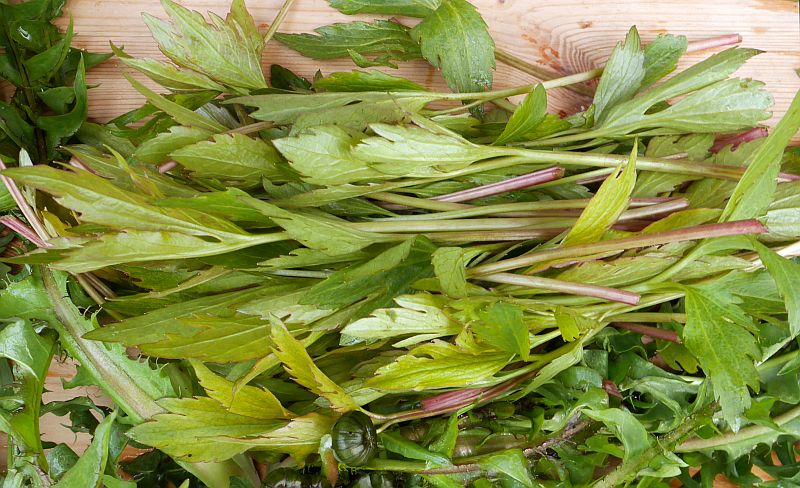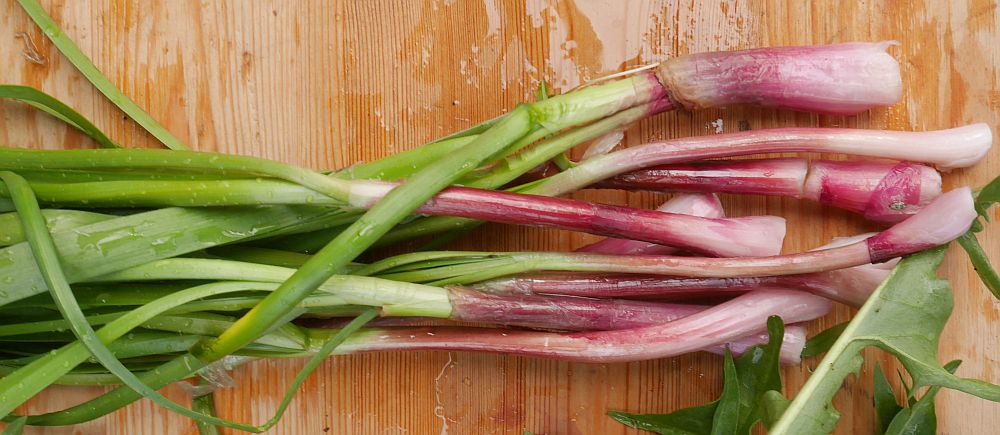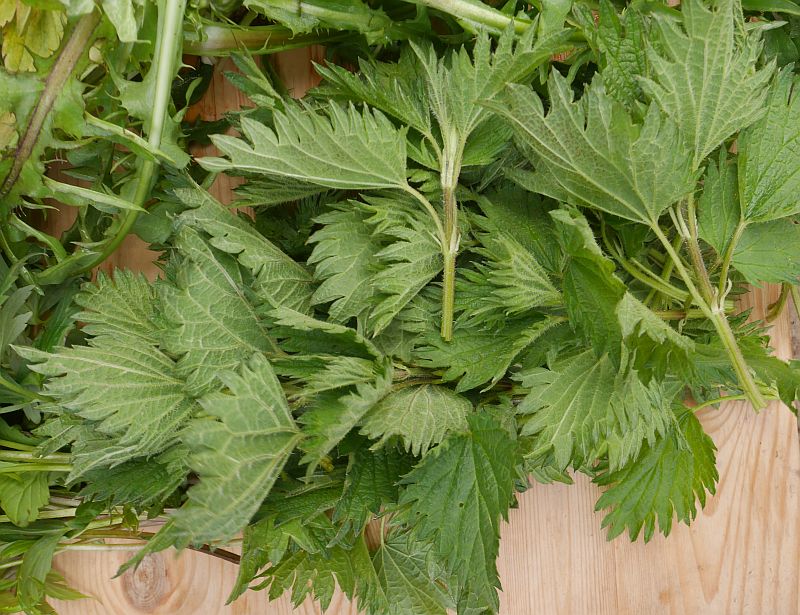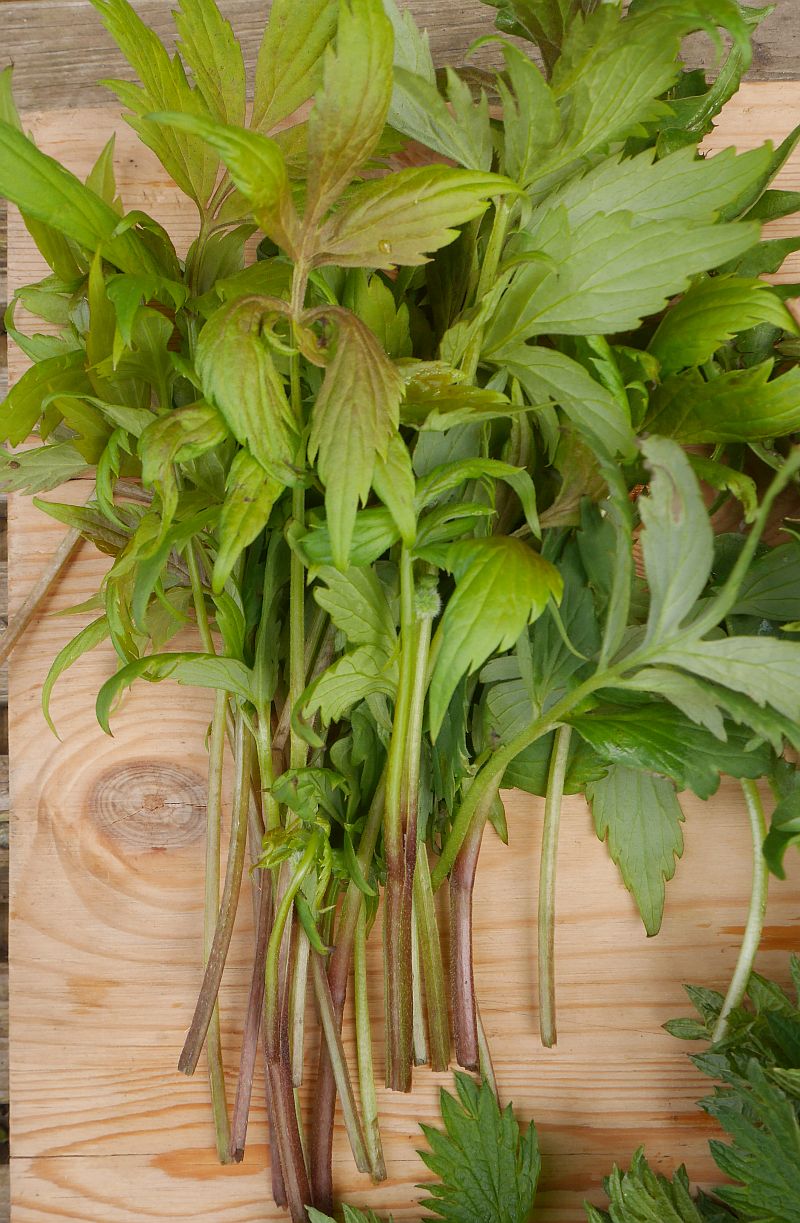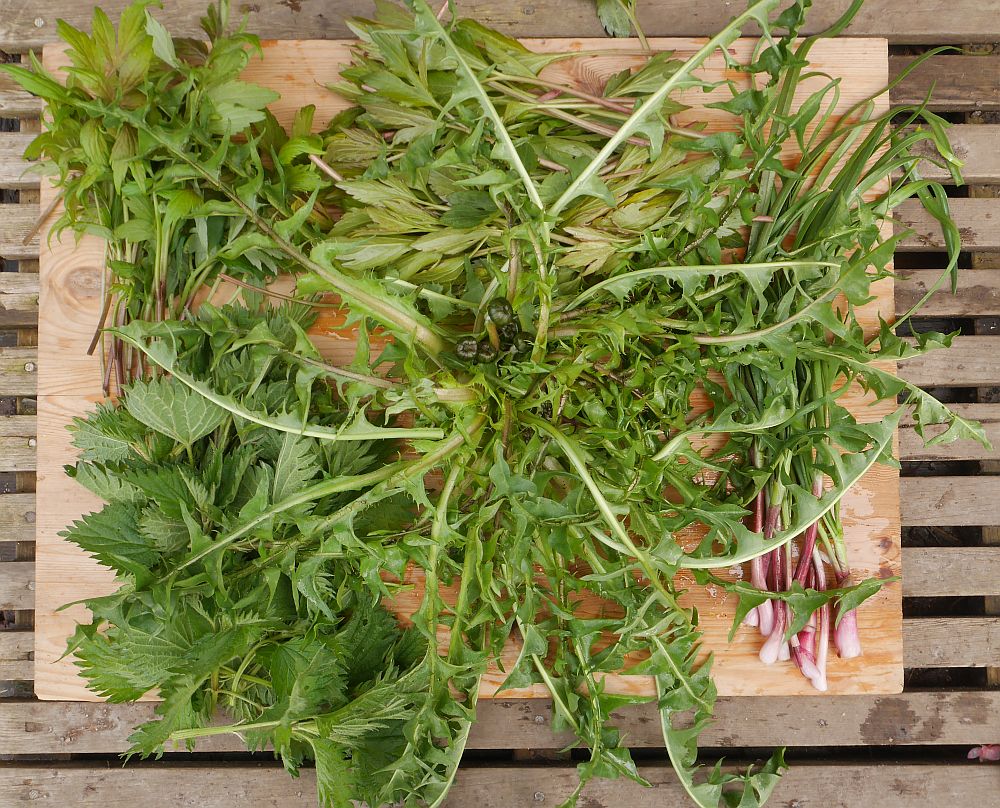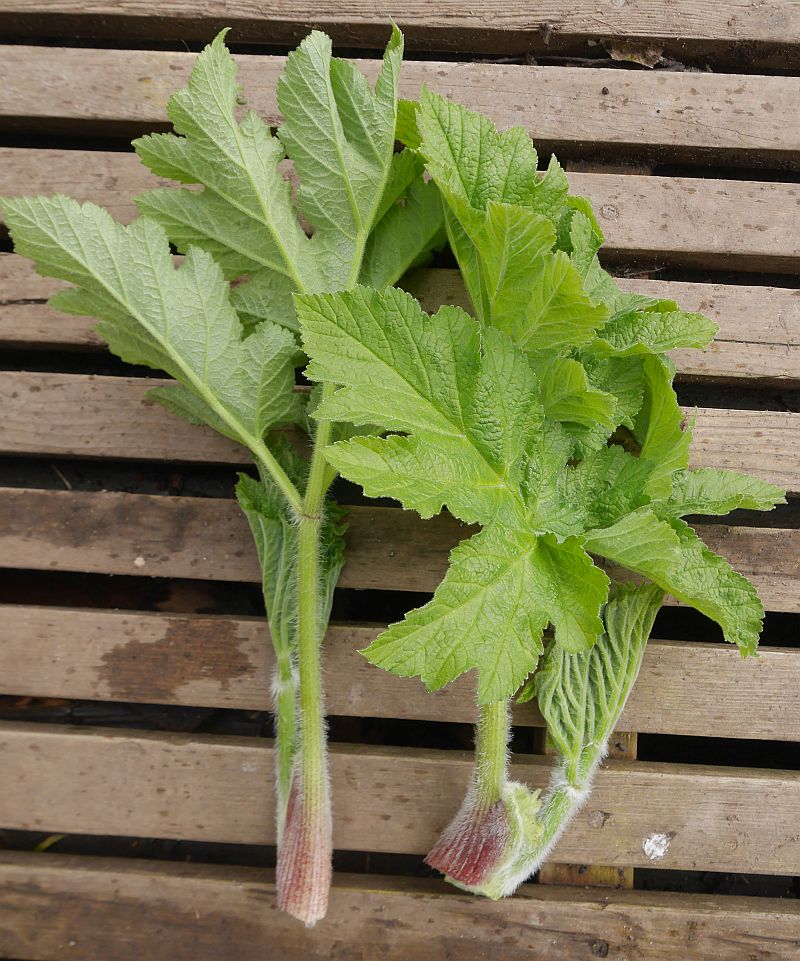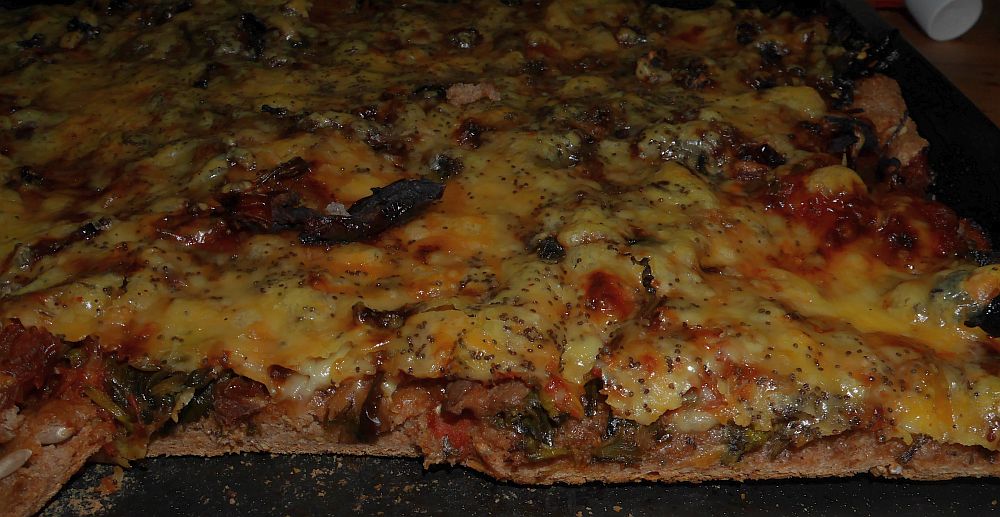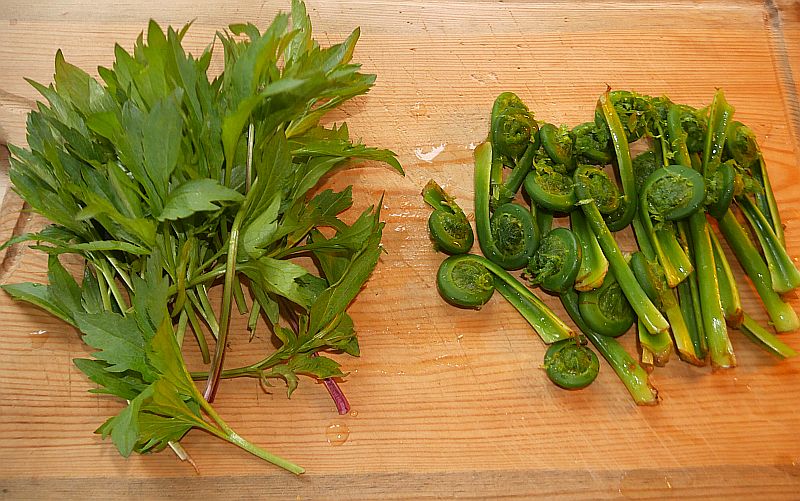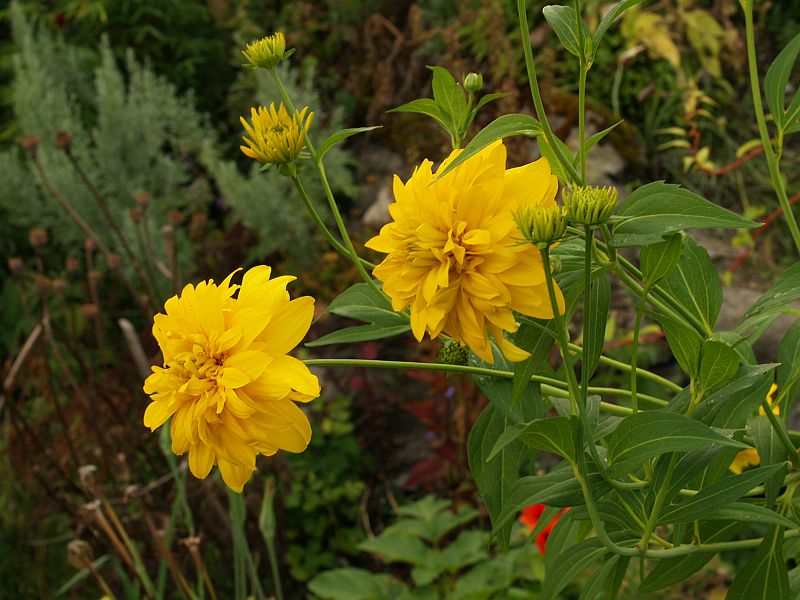AROUND THE WORLD IN THE EDIBLE GARDEN; Part 1 – The Cherokee lands of Eastern North America
The first in a series of dinners from Malvik’s Edible Garden where we “forage” from different parts of the world!
Cherokee Pizza is of course better known as Cherokizza…go on, look it up :). This is the classic Native American Italian dish and it was made in Norway today! All you need is a good selection of Cherokee wild vegetables:
Appalachian greens / kyss-meg-over-gjerde (Rudbeckia laciniata); see http://www.edimentals.com/blog/?p=22018
Nodding onion / prærieløk (Allium cernuum)
Stinging nettle / brennesle (Urtica dioica)
Virginia waterleaf / Indian salad (Hydrophyllum virginianum)
Dandelion / løvetann (Taraxacum spp.) (a giant individual, as you will see from the pictures, growing on seaweed on the sea kale bed)
Cow parsnip (Heracleum maximum)
I used a thick 100% whole grain rye sourdough base for the pizza, so a bit of Denmark in there too!
Tag Archives: Cherokee
Appalachian Greens
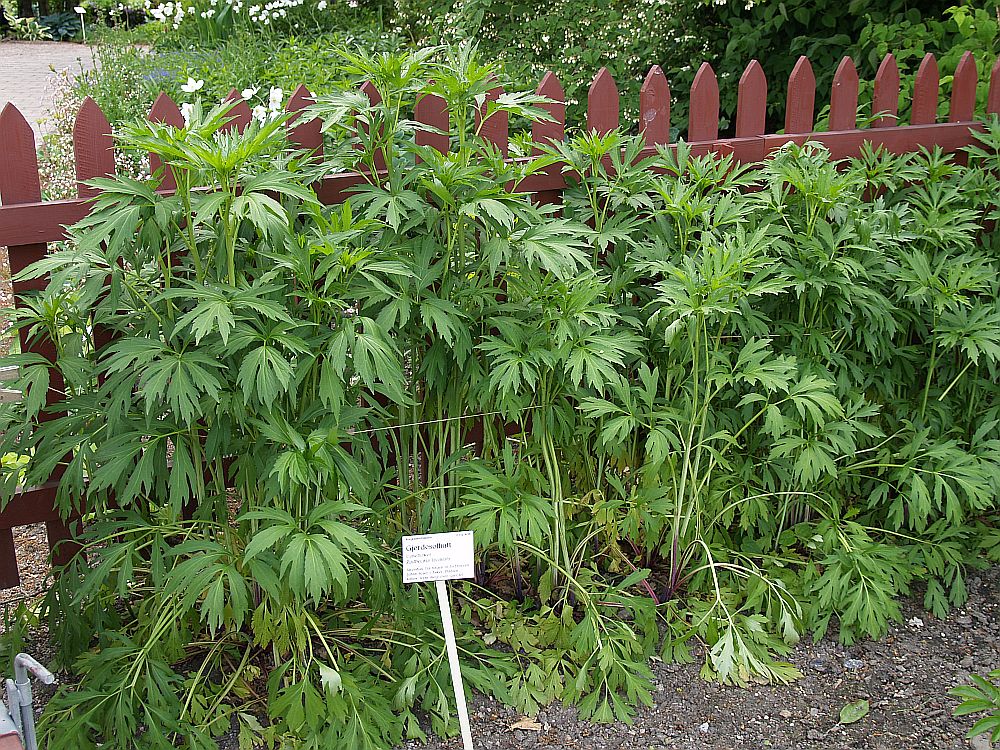
Here in Norway, the double-flowered cultivar “Hortensis” (also sold in the UK as “Golden Glow”) is a common ornamental known as “Gjerdesolhatt” or “Kyss meg over gjerdet” (Kiss me over the fence) reflecting on the fact that it’s often planted next to fences.
I’m not sure where I first heard of its edibility, but another Norwegian gardener sent me a plant 10 years ago and it’s since spread slowly where I placed it in a shady spot (sunny in spring before the leaves of an apple tree shade it out!):
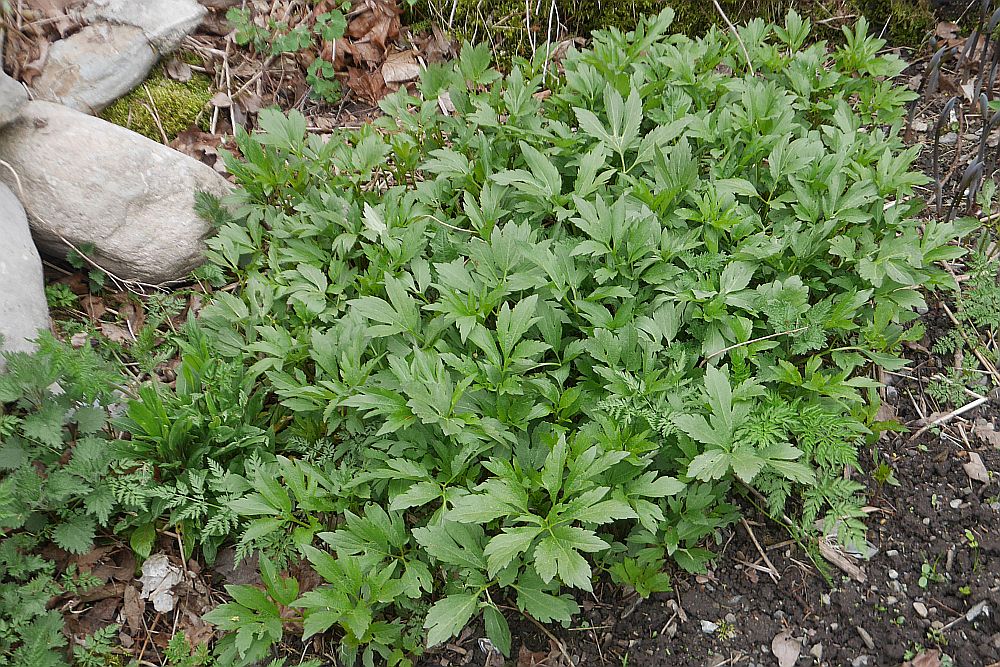
It is well documented as probably the most important spring vegetable of the Cherokee in the Southern Appalachians in Moerman’s Native American Ethnobotany, which is probably where I first noted its edibility. It’s missed in Cornucopia II. The Cherokee ate the tender young leaves and stems cooked alone or with other greens such as poke (Phytolacca americana), Ramps (Allium tricoccum), Rumex spp. (docks) and eggs. They were also fried with fat and were also dried for later use and also eaten as a cooked spring salad or as celery (presumably raw). Unlike some other Native American veggies, this one doesn’t seem to have been adopted by the Europeans and remained a closely kept Cherokee secret!
I didn’t know of others who had eaten this plant and it wasn’t until I read Samuel Thayer’s glowing account of this plant (11 pages) in his gem of a book “Incredible Wild Edibles” (2017) that I was encouraged to give it a go! I also missed Mountain Gardener Joe Hollis’ video on this plant (https://www.youtube.com/watch?v=aBJncaj1ZPM; also from 2017).
It is believed to have similar medicinal properties to closely related Echinacea (also known as coneflower).
I finally got round to trying it for the first time last week and, wow, I hadn’t expected it to taste that good, slightly sweet and aromatic similar to other Asteraceae like Korean Aster scaber. We served it with probably the No. 1 North Appalachian spring edible, Ostrich Fern (Matteuccia struthiopteris).
The RHS Plant Finder in the UK lists 12 different ornamental cultivars available from UK nurseries!
In Norway, this species has escaped from gardens and is established in some places, but is not considered to have an ecological risk (low risk on the national invasives list). It is very hardy. My double-flowered clone doesn’t seem to produce seed.
ENJOY!
Incredible “Incredible Wild Edibles” by Sam Thayer
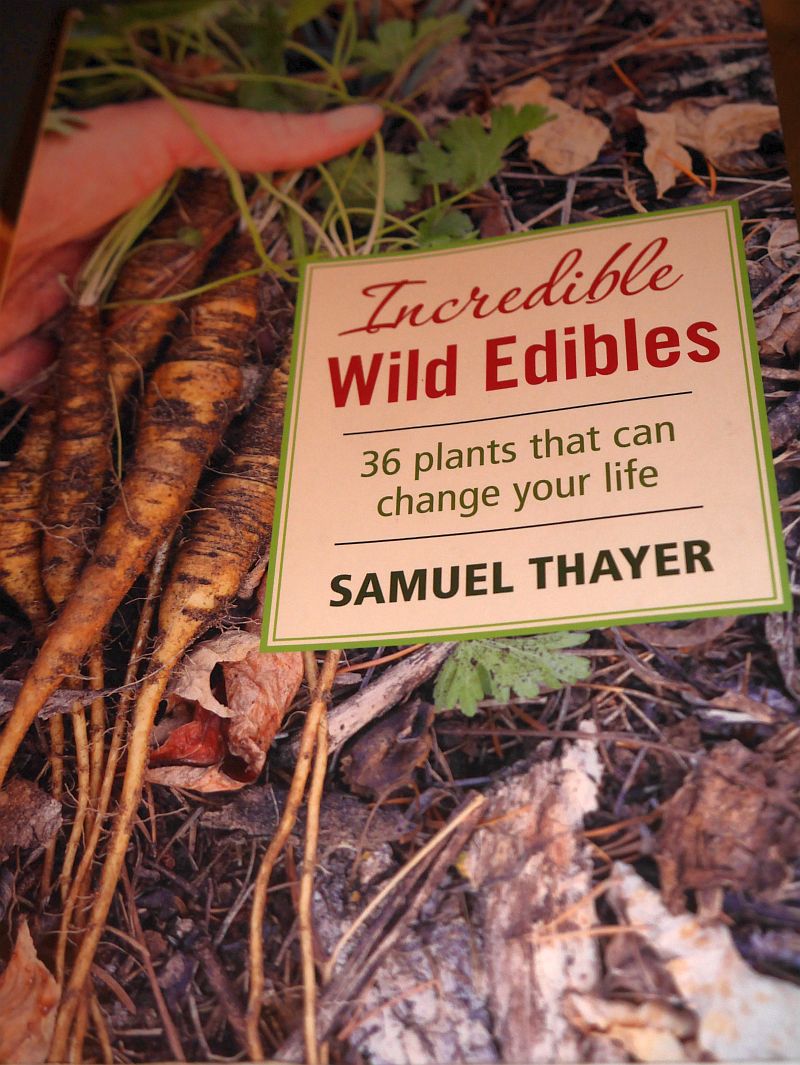
Sam Thayer is without doubt my favourite foraging author and his new book Incredible Wild Edibles does nothing to change that! It’s been 7 years since his book “Nature’s Garden” and 11 since his debut, Forager’s Garden. All his books are thoroughly researched and I love his plant descriptions, which are detailed, thoughtful and accurate with lots of fun personal anecdotes intertwined! The range of edible plants in this book is very wide and includes amongst others plants yielding berries (including one of my favourites, but rarely grown, black raspberry), leafy greens and shoots (caraway, poke and bladder campion), annual weeds (chickweed and shepherd’s purse), “ground” nuts (chufa), herbs and spices (caraway and fennel), introduced invasives (Japanese knotweed, creeping bellflower), winter crops (miner’s lettuce), root crops (Psoralea or prairie turnip and poppy mallow or Callirhoe involucrata), nut trees (hickory), seed crops (black mustard), water vegetables (watercress), sap sugar (maple) and edible flowers (violet). As with Thayer’s other books, although these are North American wild edibles, some are cultivated as garden edibles around the world and several have a wide geographic distribution including Europe or originating in Europe (I like to think that caraway was introduced originally to North America by the Vikings from here in Norway). Some are also new wave perennial vegetables being grown in permaculture inspired and forest gardens. I actually grow most of this collection in my own garden in Norway. Therefore, all of Thayer’s books are also of interest to foragers, edible gardeners and permaculturists both in and outside of North America! There are 3 species covered which I was particularly interested to read about as they are seldom covered in foraging and edible gardening books. These are water parsnip (Sium suave), Sweet root (Osmorhiza spp.) and sochan or cut-leaf coneflower (Rudbeckia laciniata), the secret vegetable of the Cherokee. I’ve grown the latter in my garden for several years (a double flowered ornamental form; see the picture) as I’d read that it was used by native americans but had never found much in the way of first hand information! I can now look forward to trying this in my ever growing collection of edimentals or edible ornamentals (plants doubling good taste with good looks!)
The book starts with a number of short essays on various relevant subjects. I particularly enjoyed his “Foraging against the invasion”, that herbicides are not the solution, creating an ecological void, quickly recolonized by invasives….that it’s unrealistic that we will win in the end…and that foragers should participate in the deliberate control of invasives as they are the people most likely to notice and have an impact. Foraging can in this way actually save native plant communities rather than what is often stated, that foraging destroys by overharvesting. And many invasives are of course excellent edibles (we are planning an invasives festival here in Norway!)
The book ends with Thayer’s essay on what he terms Ecoculture! This is Thayer’s term for the ancient practice of the management of natural ecosystems to enhance their production of useful products…and argues that it should and could become an important component of future food systems. I remember on a visit to the West Coast reading in old (suppressed) literature about the amazing extent to which Native Americans managed the forests for food and other products. This is of course nothing unique to North America. These practices are also one of the inspirations of Permaculture’s forest gardens or food forests. Thayer also describes a part of his own garden that he has planted as a diverse productive garden of edibles, but he only (or mainly) uses native plants. Native ecoculture works for Thayer as native forests in his part of the world are particularly diverse and able to supply the calories…in my part of the world this is difficult without introducing non-natives like nut trees and introduced perennial vegetables in our relatively poor native flora……therefore I use forest gardening rather than ecoculture. Thayer gives the prime example of the sugar maple and wild leek (Allium tricoccum) forests….the closest we have to this in Norway are hazel – ramsons (Allium ursinum) woods, but they are rather limited in extent and nuts are small. Our permaculture forest gardens lie somewhere between “unstable” mainstream agriculture and its predominantly annual crops and Thayer’s relatively stable natural plant communities with mainly perennials.
Thayer also argues that rather than reducing our impact, we need rather “to increase our positive impact on the landscape whilst gathering earth’s gifts to nourish and heal ourselves”. There is also food for thought that in-situ natural perennial poly-ecocultures do not involve improved varieties as domestication or plant improvement happens in isolation……
Get this book, it could indeed change your life!
Seven years was worth the wait! Thank you Sam!!
Overview of Sam Thayer’s books:
Forager’s Harvest: 2006 (360 pages) 32 plants
Nature’s garden: 2010 (512 pages) 41 plants
Incredible Wild Edibles 2017 (479 pages) 36 plants

